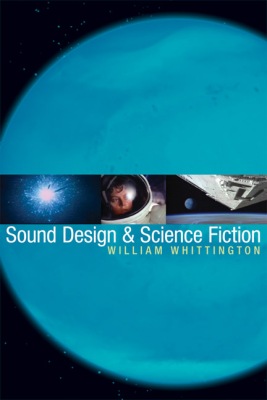
William Whittington, Ph.D. is the author of Sound Design and Science Fiction (University of Texas Press, 2007) and co-editor of Spectatorship: Shifting Theories of Gender, Sexuality, and Media (University of Texas Press, 2017). He is also the Assistant Chair of Cinema & Media Studies in the School of Cinematic Arts, where he teaches courses in film and television history, genre, audio and digital culture, film and Buddhism, adaptation, and contemporary LGBT media. Between 1993-1997, he served as the curator of the USC Warner Bros. Archives, assisting with research on various films, documentaries, music scores and books. He has also worked as an editor for Time Warner Trade Publishing, specializing in the production of audiobooks. His scholarly work includes articles and interviews on genre, audio and digital culture, and media technology, and he is currently writing a new book entitled: Sound Design and Horror (forthcoming).
Sound and Science Fiction/Horror
In this brief sound seminar, we will discuss cinematic sound in relation to film history, theory and production practices. Of particular interest will be the history of sound design, the applications of sound in relation to genre, specifically science fiction, action and horror films, and the techniques used in contemporary sound production. Sound and its relation to animation will also be an important area of discussion.

Midge Costin – Sound Design
 Midge Costin is the Kay Rose Professor in the Art of Dialogue & Sound Editing. She is the first to hold this endowed chair, which was given by George Lucas in 2005 and has been Head of Sound at SCA since 2000.
Midge Costin is the Kay Rose Professor in the Art of Dialogue & Sound Editing. She is the first to hold this endowed chair, which was given by George Lucas in 2005 and has been Head of Sound at SCA since 2000.
For 20 years, Costin has been a feature film sound editor in Hollywood, having worked at every major studio. Costin has collaborated on the soundtracks for filmmakers such as John Waters (Crybaby), David Wolper (Imagine: John Lennon), Kenneth Branagh (Dead Again), Tony Scott (Crimson Tide) and Jerry Bruckheimer (The Rock). Two of the films, Crimson Tide and Armageddon, for which she edited effects and dialogue, received Academy Award nominations for Sound Editing.
Several of the films Costin has sound edited have received nominations for the Motion Picture Sound Editors’ Golden Reel Award. Crimson Tide won for Best Feature Film Sound Editing.
Costin worked her way up to editing sound on action adventure films at a time when very few women were cutting Fx in Hollywood (a situation which has not changed significantly). She is a past Board member of the MPSE and is a long-standing member of the Editors Guild.
Her avocation as a surf kayaker has earned her a spot on the U.S. Surf Kayaking Team in 2005, the winner of the World Championship in Costa Rica. In 2007, the team took fifth place in Spain.
I remember when I first recognized the elephant trumpet/roar within the T-Rex’s roar in ‘Jurassic Park’. I was so astonished and floored that that was mixed in and used to make his roar!! Sound in film and animation is fascinating and can really make or break the emotion you’re trying to convey, whether it is fear or sadness or hope.
This seminar was really fun and enjoyable. It is clear how passionate William and Midge are about what they do and this field, which was very inspiring to see. The examples they showed were great – especially ‘Jaws’, ‘Tree of Life’, and my favorite, ‘Jurassic Park’. I’m looking forward to visiting them and discussing more about sound when I get further into my thesis, and hopefully getting their input on what I’m creating.
LikeLike
I loved this seminar. I think sound design is so often overlooked, both in animation and in film in general. It’s such a visual medium that I think the people who work in it often forget that sound can communicate just as much. Good sound design can push your animation to a whole new level, and easily communicate things to the audience that would be much more difficult to do visually.
I also thought that the exercise where we listened to different soundscapes and said what we thought about them emotionally was very interesting. I noticed that the people who were from cities tended to say that the city sounds were more welcoming and the rural sounds were creepy, while the people who were from the country tended to say the city made them feel anxious and uncomfortable while the rural street was relaxing. It’s crazy that the exact same sound could convey totally opposite messages depending on who the audience is. Yet another example of why it’s important to know who your audience is.
LikeLike